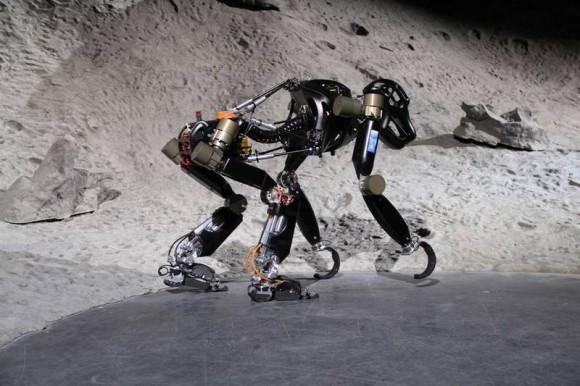iStruct Robot Ape Evolves Upright As Robo-Spine Research Eyes Space
What took humans millions of years to achieve, Germany's robotic ape has done in moments, with a research project into artificial spines showing how a quadrupedal 'bot can evolve into a bipedal one. Three months ago, DFKI's iStruct robo-ape was wandering around on all-fours as engineers experimented with human-inspired skeletal systems for potential space exploration. Now, it's able to stand up and move around on two legs.
As DFKI sees it, traditional robots struggle with moving around non-linear environments because they have feet with a single point of contact and very little movement within their bodies. Instead, the iStruct prototype has multi-point-contact feet, which pair almost fifty sensors – including pressure, angle, distance, and even temperature – with multiple motors for several degrees of freedom, allowing the ape to adjust its stance according to the nature of the surface it's standing on.

However, the robot also swaps the solid upper body found in something like Honda's ASIMO for an adjustable one, mimicking the human spinal column. Now articulated with six degrees of freedom, the spine can not only shift the upper body for better balance, but function as a torque sensor too for real-time feedback.
iStruct quadrupedal to bipedal transformation:
The result, DFKI has found, is a robot that can not only lumber around on all-fours with a high degree of stability, but stand upright and balance more readily even when the upper arms are extended or moved. iStruct can shift its center of mass based on live data about the surrounding environment.
It's impressive stuff, though we'll admit to some misgivings about the robo-ape's hands: they may look like paws when it's on all-fours, but they start to look a whole lot more like culling hooks when it's standing up. Exactly when iStruct might start exploring distant environments is unclear at this stage, though the team at DFKI will be showing it off at the Intelligent Robots and Systems conference in Tokyo in early November.
VIA IEEE Spectrum
